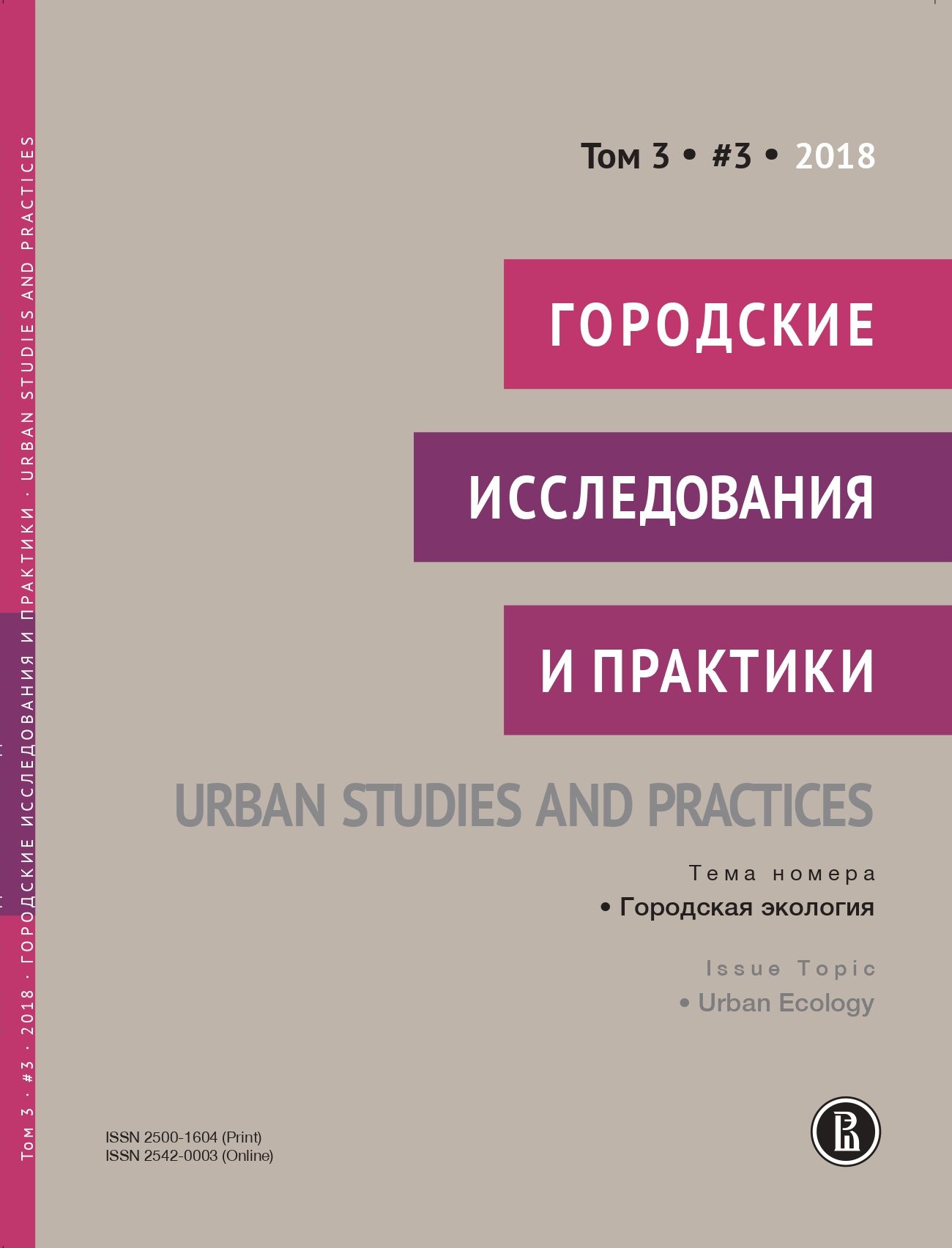The Role of Urban Soils in the Regulation of Greenhouse Gas Emissions
Abstract
In connection with the growth of industrialization, cities are becoming increasingly important in the circulation of substances in nature. Cities act as sources of greenhouse gases, which are emitted by industry, road transport, landfills, and urban soils. Due to the increase in population density, there are more and more areas with unfavorable environmental conditions, such as overmoist floodplains, filled ravines, unauthorized waste dumps, and reclaimed filtration fields. Urban soils in such areas are sources of and sinks for methane and carbon dioxide. This study is important for understanding the contribution of urban soils to greenhouse gas emissions, which is still unknown. The results can used in the development of recommendations for the reclamation of geochemical gases from potentially dangerous areas used for construction.
In connection with the growth of industrialization, cities are becoming increasingly important in the circulation of substances in nature. Cities act as sources of greenhouse gases, which are emitted by industry, road transport, landfills, and urban soils. Due to the increase in population density, there are more and more areas with unfavorable environmental conditions, such as overmoist floodplains, filled ravines, unauthorized buried dumps, and reclaimed filtration fields. Urban soils in such areas are sources of and sinks for methane and carbon dioxide. This study is important for understanding the contribution of urban soils to greenhouse gas emissions, which is still unknown. The results can used in the development of recommendations for the reclamation of geochemical gases from potentially dangerous areas used for construction.
Downloads
References
Гальченко В.Ф. (2001) Метанотрофные бактерии. М.: ГЕОС.
Добровольский Г.В., Никитин Е.Д. (1986) Экологические функции почвы. М.: Изд-во МГУ.
Доклад «О состоянии окружающей среды в городе Москве в 2014 году» (2015) / под ред. А.О. Кульбачевского. М.: ДПиООС; НИА-Природа.
Заварзин Г.А. (1997) Эмиссия метана с территории России // Микробиология. Т. 66. No 5. С. 669–673.
Каллистова А.Ю. и др. (2006) Эмиссия метана с поверхности полигона захоронения твердых бытовых отходов в зависимости от возраста полигона и от времени года // Экологическая химия. Т. 15. Вып. 1. С. 13–21.
Классификация и диагностика почв России. (2004) / Л.Л. Шишов, В.Д. Тонконогов, И.И. Лебедева, М.И. Герасимова. Смоленск: Ойкумена.
Ключевые климатические показатели. (2018) // Заявление ВМО о состоянии глобального климата в 2017 г. // ВМО. No 1212. С. 5–9.
Режим доступа: [https://library.wmo.int/opac/doc_num.php?explnum_id=4457](https://library.wmo.int/opac/doc_num.php?explnum_id=4457) (дата обращения: 15.11.2019).
Методы почвенной микробиологии и биохимии. (1991) / под ред. Д.Г. Звягинцева. М.: Изд-во МГУ.
Можарова Н.В., Кулачкова С.А., Лебедь-Шарлевич Я.И. (2018) Эмиссия и поглощение парниковых газов в почвах Москвы // Почвоведение. No 3. С. 1–13.
Национальный доклад Российской Федерации о кадастре антропогенных выбросов из источников и абсорбции поглотителями парниковых газов, не регулируемых Монреальским протоколом за 1990–2004 гг. (2006) М.: Росгидромет.
Паников Н.С. и др. (1992) Образование и потребление метана в почвах Европейской части СССР // Журнал экологической химии. No 1. С. 9–26.
Полевые и лабораторные методы исследования физических свойств и режимов почв. (2001) / под ред. Е.В. Шеина. М.: Изд-во МГУ.
Прокофьева Т.В. и др. (2014) Введение почв и почвоподобных образований городских территорий в классификацию почв России // Почвоведение. No 10. С. 1155–1164.
Розанов Б.Г. (2004) Морфология почв: учеб. для высшей школы. М.: Академический Проект. С. 359.
Смагин А.В. (2005) Газовая фаза почв. М.: Изд-во МГУ.
Степанов А.Л., Манучарова Н.А. (2006) Образование и поглощение парниковых газов в почвенных агрегатах. М.: Изд-во МГУ.
Теория и практика химического анализа почв. (2006) / под ред. Л.А. Воробьевой. М.: ГЕОС.
Экологический атлас Москвы. (2000) М.: АБФ/ABF.
Carbon and Other Biogeochemical Cycles, 2013 (2013) // IPCC. Climate Change 2013. The Physical Science Basis. Working Group I Contribution to the Fifth Assessment Report of the Intergovernmental Panel on Climate Change / T.F. Stocker et al. (eds). Cambridge, United Kingdom and New York, NY, USA: Press C.U. P. 465–570.
Decina S.M. et al. (2016) Soil Respiration Contributes Substantially to Urban Carbon Fluxes in the Greater Boston Area // Environmental Pollution. Vol. 212. P. 433–439.
Kulachkova S., Mozharova N. (2015) Generation, Sink, and Emission of Greenhouse Gases by Urban Soils of Reclaimed Filtration Fields // Journal of Soils and Sediments. Vol. 15. No. 8. P. 1753–1763.
Livesley S.J. et al. (2010) Soil-atmosphere Exchange of Carbon Dioxide, Methane and Nitrous Oxide in Urban Garden Systems: Impact of Irrigation, Fertiliser and Mulch // Urban Ecosyst. Vol. 13. P. 273–293.
Robertson D.S. (2006) Health Effects of Increase in Concentration of Carbon Dioxide in the Atmosphere // Current Science. Vol. 90. No. 12. P. 1607–1609.
Satterthwaite D. (2008) Citiesʼ Contribution to Global Warming: Notes on the Allocation of Greenhouse Gas Emissions // Environment & Urbanization. Vol. 20. No. 2. P. 539–549.
Serrano-Silva N. et al. (2014) M. Methanogenesis and Methanotrophy in Soil: A Review // Pedosphere. Vol. 24. No. 3. P. 291–307.

